Understanding hosting error messages
A message is received when the web server informs the browser if a request to view a website was successful or not. It does this by using status codes or error messages. If everything is successful the browser will obtain the status code 200, but the status code will not appear on the browser because the requested website is displayed successfully.
Here are some of the common status codes and error messages you may come across:
- Error 500 - Internal server error
- Error 503 - Service Unavailable
- Error 504 - Gateway Timeout
- Error 404 - Not found
Error 500 - Internal server error
The ‘500 internal server error’ is a generic HTTP status code that indicates that something has gone wrong on the website's server, and the server is unable to provide more information about the problem. It is unlikely, but possible, that this error is caused by problems with the computer that is trying to connect to the server.
Solutions:
There are a few troubleshooting actions that can be taken:
- Reloading the page. It is possible that the server is overloaded, and the site will come right back up once refreshed. You could also try a different browser to rule the browser out as an issue.
- Clear the browser cache and restart the browser. Sometimes the issue will be fixed after you clear the browser cache and cookies.
- Press Ctrl + Shift + Delete.
- You will get a window to ‘Clear browsing data’.
- Select the relevant ‘time range’.
- Tick the relevant boxes.
- Click ‘Clear data’.
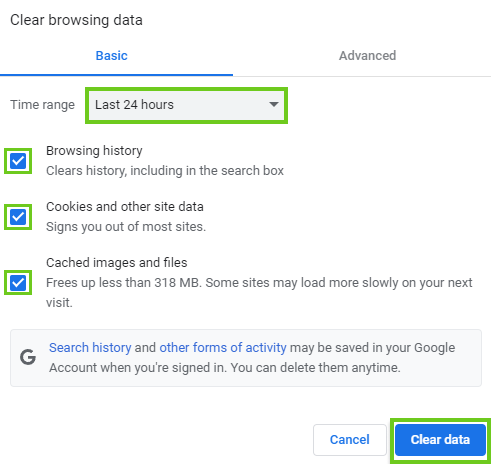
- Press Ctrl + Shift + Delete.
- You will get a window to ‘clear recent history'.
- Tick the relevant boxes.
- Click the ‘OK’ button.
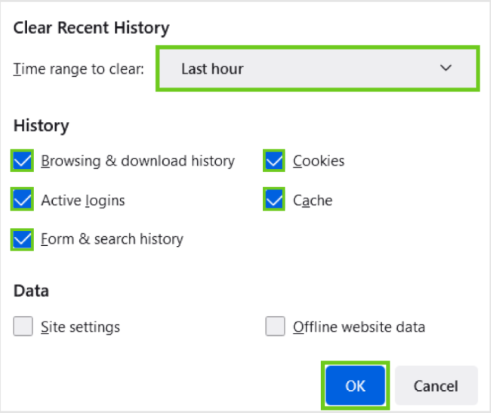
- Update the domain PHP version. ‘500 internal server error’ is a general error that indicates that something went wrong while trying to access the requested website. It is possible that the issue is caused by the domain’s PHP version not matching the requirements of the website themes or plugins. The newer PHP version will come with other benefits such as better security and the website will be faster.
If you would like to know How to update your domain PHP version, please read our Help Centre article for assistance.
- Check the plugins and themes. ‘500 internal server error’ can often be caused by plugin or theme function conflicts. You can disable the plugins to check if this is the issue. To disable the plugins, log into File Manager and rename the plugins folder to ‘plugins_old’. If the website works after renaming the plugins folder you will need to login to the website’s backend/admin page to update the plugins.
- Login to ClientZone.
- Select the ‘Hosting’ tab.
- Under the shared hosting section, select your domain on the right-hand side.
- Select ‘Website Manager’.
- Click ‘Log into Website Manager’.
You will now be in your cPanel or CWP control panel
- Select ‘File Manager’.
- Select the ‘public_html’ folder.
- Right-click on the ‘plugins’ folder and rename it as ‘plugins_old’.
If you would like to know How to update themes and plugins in WordPress, please read our Help Centre article for further assistance
You need to rename the plugins folder back to its original name in order to be able to see the updates in the backend.
- Troubleshoot as ‘Error establishing a database connection’. The error could mean that something is wrong with the database. Incorrect database information in your WordPress settings, a corrupt database, or an irresponsive database server can cause the internal server error 500. This WordPress error can be resolved by following the troubleshooting steps on How to fix an error establishing a database connection.
Error 503 - Service Unavailable
The ‘error 503 service unavailable’ is an HTTP response status code that indicates that the webserver is up and running, however, it is currently unable to handle the request.
Solutions:
Here are some troubleshooting measures that can be taken:
- Update the domain PHP version. You may get this error if your domain needs a PHP update. Update to the latest version available.
If you would like to know How to update your domain PHP version, please read our Help Centre article for assistance.
- Check the website's code to find bugs. If your website's code contains an error, the web server may be unable to correctly respond to requests. Look for flaws in your code or copy it to a development machine. It will go through a full debugging process, simulating the identical situation in which the error happened and allowing you to pinpoint where things went wrong. You may need to speak to your developer for assistance.
Error 504 - Gateway Timeout
The ‘504 gateway timeout’ error indicates that the server, while acting as a gateway or proxy, did not receive a response first from the upstream server in time to complete the request.
Solutions:
Here are some troubleshooting actions that can be taken:
- Refresh the web page. You can do this by selecting the refresh/reload button or pressing F5 on your keyboard or entering the URL in the address bar again. The error may be a temporary issue.
- Restart your network devices. Temporary problems with your modem, router, switches, or other networking hardware could be causing the error. Turn them off for a moment and back on again.
- Check the proxy server settings. Incorrect proxy settings can be the cause of 504 errors. Some of the benefits of a proxy server include enhanced security and access to location-specific content.
A proxy server is a system that acts as a connection point for users and the internet. It aids in the prevention of cyber-attacks on a private network. It is a server that acts as an intermediary between end-users and the web pages they browse on the internet.
How to check proxy settings in your in Google Chrome browser
- On your browser select the menu button (three dots) in the top right corner and select ‘Settings’ from the drop-down menu.
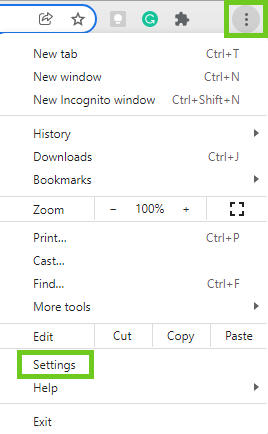
- In the search settings box, type in ‘proxy’.
- Select ‘Open your computers proxy settings’ from the search results.

- The proxy settings page will appear.
- You can manually switch the proxy server on and off.
- If you switch the proxy server on, enter the required information.
- Press ‘Save’.
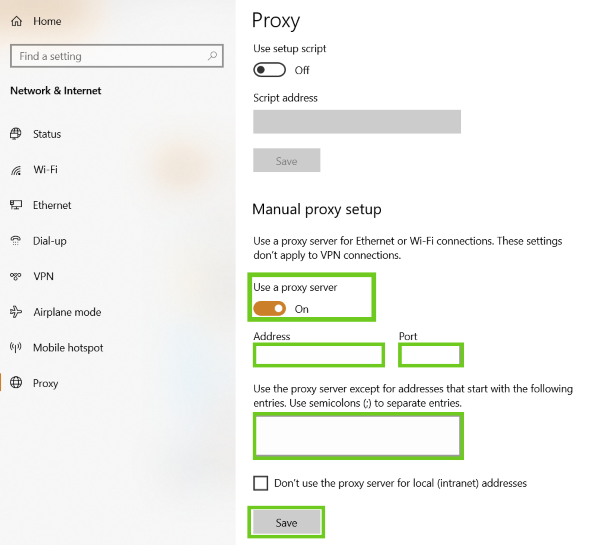
Error 404 - Not found
The ‘error 404 not found’ is an HTTP status code that indicates that the page you were looking for on a website is not available on its’ server. The error indicates that while the server is accessible, the page displaying the error message is not.
Solutions:
Here are some troubleshooting steps that can be taken:
- Refresh the web page. You can do this by selecting the refresh/reload button or pressing F5 on your keyboard or entering the URL in the address bar again. The error may be a temporary issue.
- Check for errors in the URL. Often this error occurs because the URL was typed in incorrectly or because the link selected connects to an incorrect URL.
- Clear your browser's cache. If you can reach the URL from your phone but not from a different device, clearing the cache on your browser might help.
How to clear the browsing cache in Google Chrome:
- Press Ctrl + Shift + Delete.
- The Clear browsing data window will appear.
- Select the relevant ‘time range’.
- Tick the relevant boxes.
- Click on the ‘Clear data’ button.
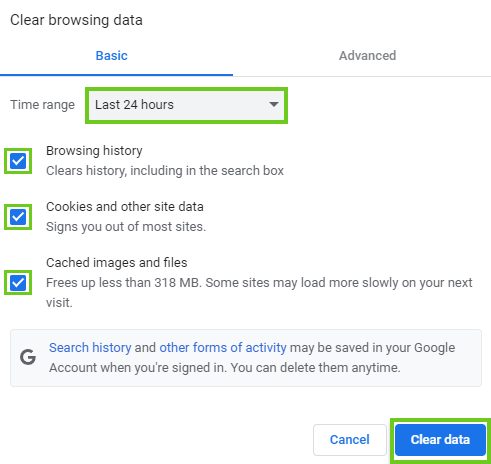
How to clear cache and cookies in Mozilla Firefox
- Press Ctrl + Shift + Delete.
- The Clear Recent History window will appear.
- Tick the relevant history boxes you wish to clear.
- Click the ‘OK’ button.
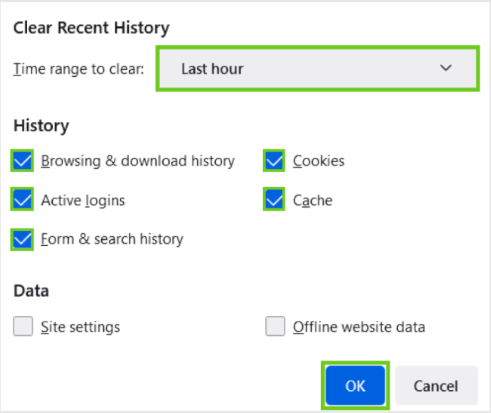
- Reset permalinks in WordPress. For WordPress websites, 404 often means there are permalink issues.
How to fix WordPress permalinks
- Log into WordPress admin page, for example, www.yourdomainname.co.za/wp-admin
- Go to ‘Settings’ on the left-hand side.
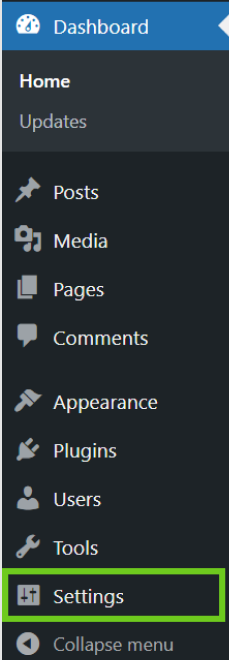
- Select ‘Permalinks’.
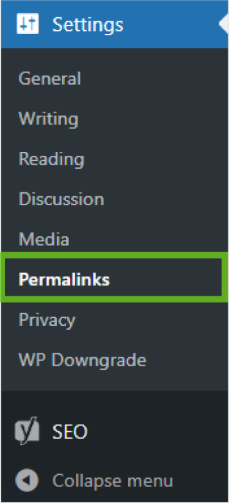
- Scroll down and click ‘Save Changes’. Saving changes will update your permalinks settings and flush rewrite rules. Reload the website.
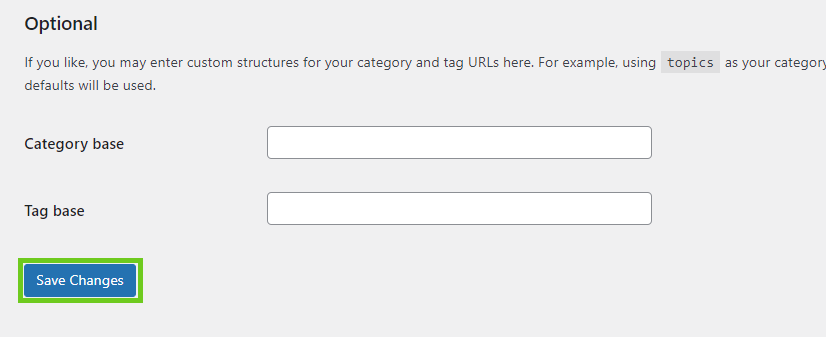
If you would like to know more about Email error messages, please read our Help Centre article for further assistance.
If any of the hosting issues persist, please email our hosting department to further check the issue from the server-side.

